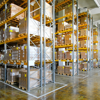Two Kinder chocolate products sold in the U.S. are being recalled after salmonella typhimurium was detected at the Belgian facility where they were made. While no salmonella cases have been identified in the U.S., the facility is linked to a salmonella outbreak in Europe that has sickened at least 142 individuals, most of whom are young children. Ferrero’s voluntary recall, issued April 7, applies to Kinder Happy Moments Chocolate Assortment boxes and Kinder Mix Chocolate Treats baskets sold at certain Costco, BJ’s Wholesale Club and Big Y Supermarket stores.
Ferrero has also announced a recall of at least 23 Kinder products sold in Canada over the same contamination concerns. The salmonella outbreak in Europe has hospitalized an “unusually high proportion” of children, according to the European Centre for Disease Prevention and Control, including some who have had severe symptoms such as bloody diarrhea.
“It is a very serious recall,” said Nicole Greene, Associate Vice President, Director, Professional Liability, Burns & Wilcox, Detroit/Farmington Hills, Michigan. “Outside of the fact of it being candy consumed by a lot of kids, this is probably one of their heightened seasons due to the Easter holiday approaching, and there are a lot more individuals who could be affected as a result.”
Another major food recall making headlines in recent days was announced by Skippy Foods, LLC, which voluntarily recalled more than 161,000 pounds of Skippy peanut butter March 30 because some jars could contain stainless steel fragments. Although no consumer concerns were reported, the company said it detected an issue with a piece of manufacturing equipment and recalled over 9,000 cases of reduced-fat peanut butter “out of an abundance of caution.”
“In this circumstance, instead of a food contaminant like salmonella or listeria, it is possibly a breakdown of their machinery allowing metal shavings to get into the product,” said Steve Bartell, Senior Broker, Casualty, Burns & Wilcox Brokerage, Chicago, Illinois. “This is a lot of peanut butter to call back, and a Product Recall Insurance policy can help companies like this protect their balance sheet so they can weather the storm while they get their product back out there for consumers to buy again.”

This is a lot of peanut butter to call back, and a Product Recall Insurance policy can help companies like this protect their balance sheet so they can weather the storm while they get their product back out there for consumers to buy again.
Product disposal, replacement among immediate recall expenses
In 2021, the U.S. Department of Agriculture’s Food Safety and Inspection Service announced 47 recalls, affecting more than 15 million pounds of product, the agency reported on Jan. 28. Four of those recalls were salmonella-related and required the recall of over 1.1 million pounds of product. Also in 2021, there were 427 recalls announced by FDA-regulated firms, Food Safety News reported. In Canada, the Canadian Food Inspection Agency oversees about 220 recall incidents per year. Microbiological hazards, such as salmonella, accounted for the highest number of total recalls in fiscal year 2019-2020, according to the agency.
When a company is faced with a recall, some of the immediate costs incurred can include notifying customers, shipping back or disposing of affected products and replacing those products. Product Recall Insurance is designed to cover these expenses, and can also cover loss of business income, third-party financial loss by retailers or clients, and reputational damage, Bartell explained.
“Are the stores going to feel comfortable carrying their products in the future?” he said. “Adverse publicity or reputational damage coverage can give them the ability to get their brand rehabilitated if it comes down to that.”
Product Recall Insurance can also help companies set up a call center for managing the recall, Greene pointed out. It is one of several resources of the policy that can add significant value.
“Businesses do not usually staff call centers to handle this type of action associated with pulling things off the shelf. The policy can help keep that communication strong, even though it is trying times,” she said. “At the end of the day, if the message does not get out, additional people could get sick. It is a much-needed quick response.”
Coverage for governmental recalls, in which a government agency responds to an ongoing recall by issuing a broader recall of certain products or ingredients, is another important consideration and may not always be included in a standard Product Recall Insurance policy. “The company could have nothing to do with those recalls,” but still be affected, Bartell said. “They want to make sure they have a governmental recall trigger in their policy, which is currently about 50/50 as to whether or not companies carry that coverage.”
Products Liability Insurance needed for product-related illness expenses
Food is the source of most salmonella infections, which hospitalize 26,500 individuals in the U.S. each year, according to the Centers for Disease Control and Prevention. Although most individuals recover without treatment, about 420 salmonella deaths are reported in the U.S. every year. In Ontario, Canada, 1,507 salmonella cases were reported in 2020, causing 211 hospitalizations and five deaths, according to Public Health Ontario.
A salmonella outbreak in Canada tied to frozen corn sickened 110 individuals from five provinces in January of this year, Food Safety News reported. Late last year, a salmonella outbreak linked to raw red, white and yellow onions caused 1,040 infections and 260 hospitalizations across the U.S., according to the CDC.
When a company’s products sicken or otherwise harm a consumer, Products Liability Insurance can cover medical costs, legal defense and indemnity payments.
“Your policy will be triggered if someone gets salmonella or swallows one of these metal shavings, and can cover the medical expenses, sometimes mental anguish, penalties, and other expenses,” Bartell explained. “A lot of times, an exclusion can be added on for punitive damages. If a judge finds that the company has repeatedly had this problem, they could specifically fine them $1 million, for example. Those punitive damages are often excluded, unless you specifically ask for that coverage back. It does not happen very often, but if it does, it generally is a large figure.”
Featured Solutions
Some business owners may assume that their Products Liability Insurance will cover the direct costs of a recall that would only be covered by Product Recall Insurance. While there may be a small recall response limit on a liability policy, that will generally only help to “start the initial conversation to investigate,” Greene said.
“Unfortunately, a lot of manufacturers think that endorsement is going to help them in the process of a recall, and it is actually not,” she said. “They are going to be left holding the financial bag for all those direct recall costs. Those are not bodily injury losses.”
Individual ingredient suppliers more difficult to insure
The risk of a widespread recall is one reason that manufacturers of single ingredients are becoming more difficult to insure, Bartell noted. “That is a growing challenge with food ingredients because they are used in so many products,” he said. “How do you determine which ingredient is the one that is at fault? Which ingredient contaminated the product, or was it something in the manufacturing process that happened? That makes it challenging from the insurance perspective. They can get coverage, but it is harder to find.”
Investigating the source of a foodborne pathogen is a vital part of a company’s response to an outbreak. Manufacturers should have strong quality control and product testing procedures in place, along with policies on how recalls will be handled, and which insurance policies supplier partners will be required to carry, Bartell said. “A recall can happen to anybody right now,” he said.

Which ingredient contaminated the product, or was it something in the manufacturing process that happened? That makes it challenging from the insurance perspective.
The same challenge exists with manufacturers of component parts used in automobiles, medical supplies and other products. “A lot of business owners are outsourcing component parts overseas, but they cannot ship the liability over to those companies because they are just not going to pay,” Greene noted. “Even if they outsource it, they are left with the quality of the product they are putting inside their product. As component parts are used in a multitude of different applications, if something goes wrong with that widget, that same component could be found in many other products and disrupt multiple industries.”
This will likely lead to more contractual requirements for insurance policies that secondary suppliers must carry, she said. For these companies, it is important to talk to a specialized insurance broker about the right policy limits. “We are often recommending $5 million or $10 million limits because the cost to rectify these situations can be significantly higher, depending on the clients they are servicing,” she said.
For any company, the direct costs involved in a recall mean “it could easily be a total policy limit loss,” Greene added. Without Product Recall Insurance, “many businesses would not survive that,” she said.
Together, both Product Recall Insurance and Products Liability Insurance offer critical balance sheet protection. “It really does help protect them against the financial devastation that would occur without insurance,” she said. “Companies need to understand the cost associated if something goes wrong. What are those costs and can you afford to pay that out of pocket? If they cannot afford a $3,000 Product Recall Insurance policy, they cannot afford the recall itself. It is something that should be a hyper-focus that they are building into their business plan. It is an absolute must. You have to plan for the best outcome but prepare for the worst.”






